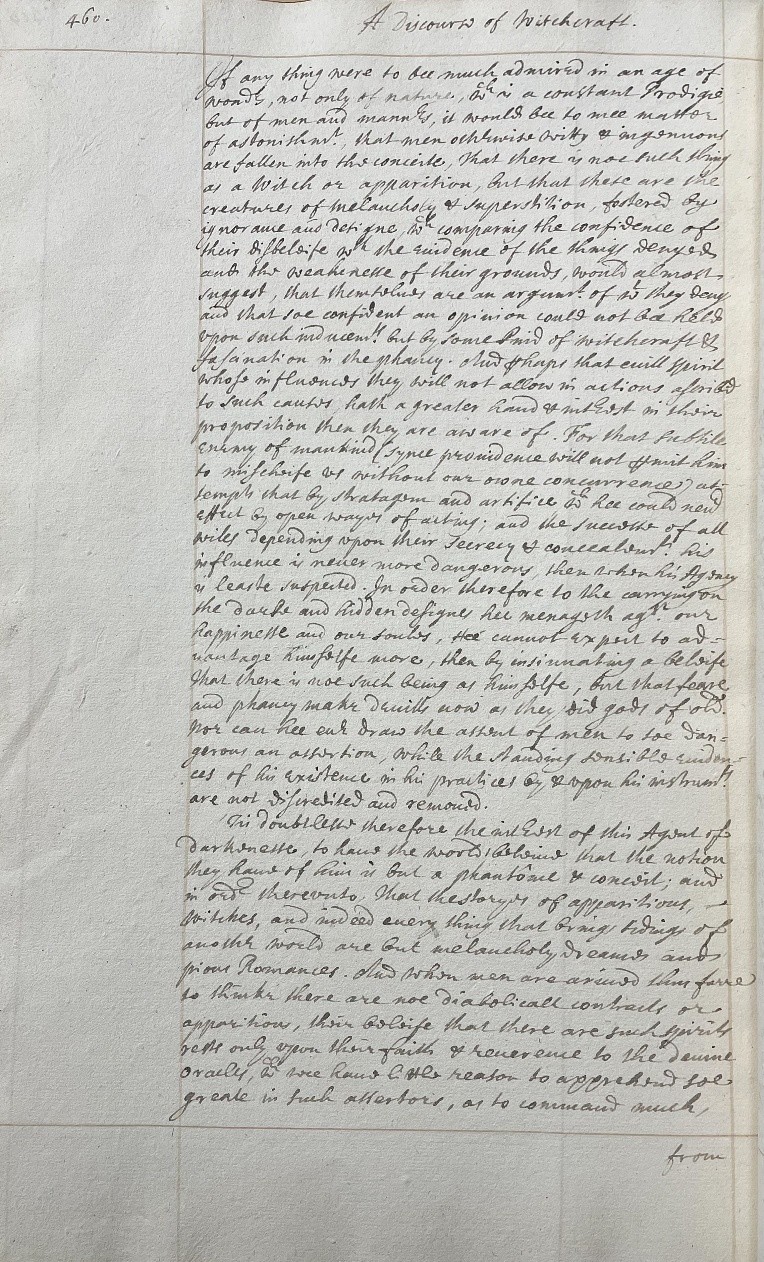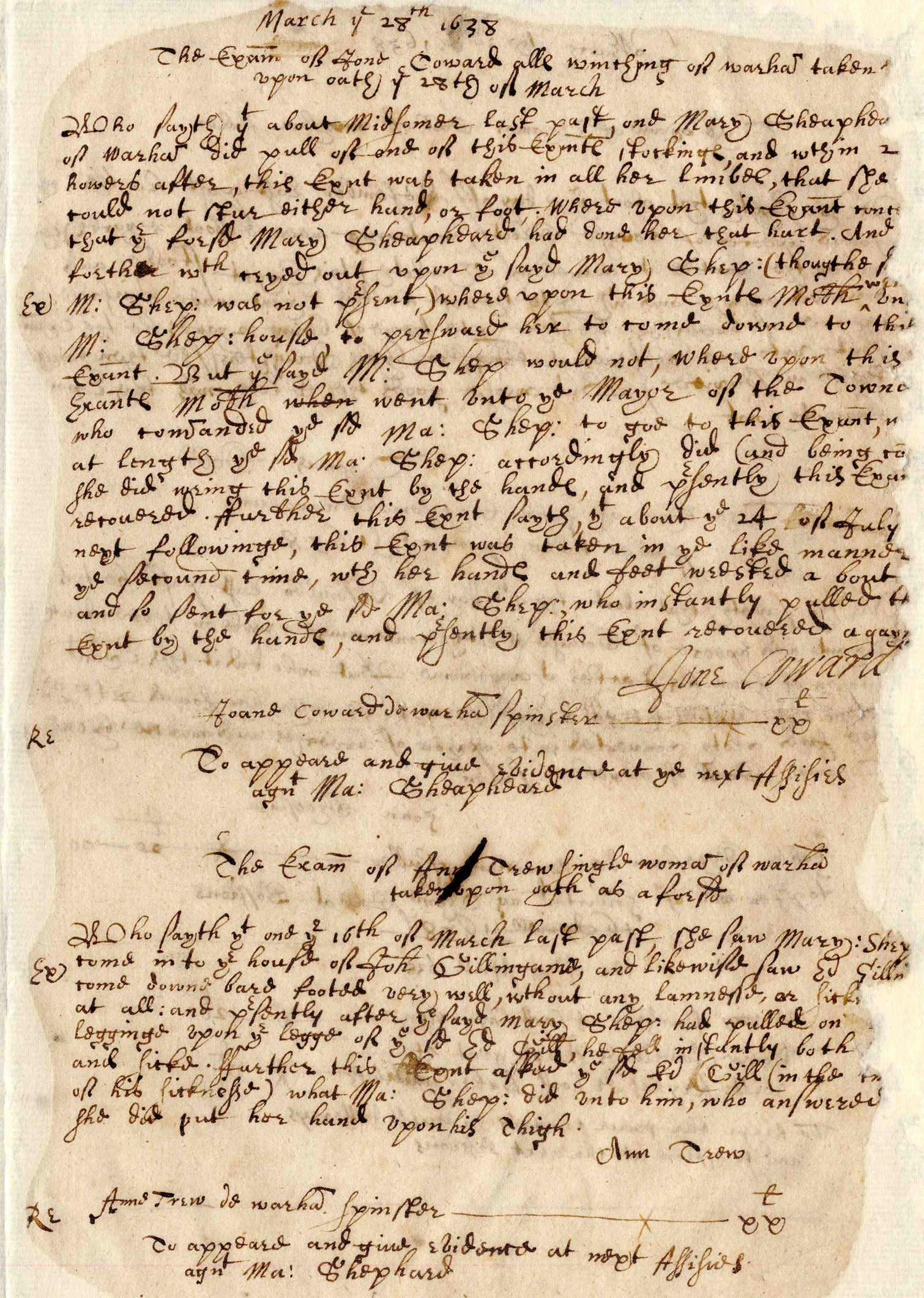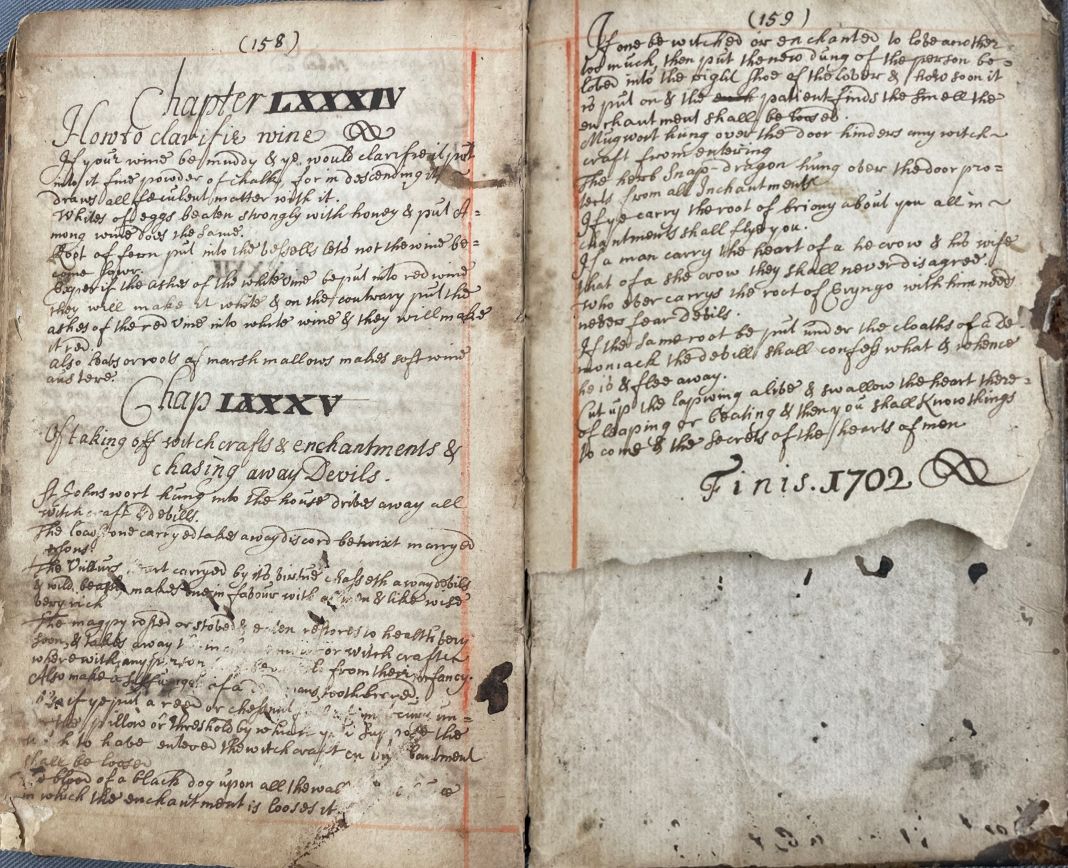This week we thought we would lean into the spirit of Halloween by looking at evidence of witches and witchcraft in Dorset from a selection of records held here at DHC.
Witchcraft and Superstition
The superstitious belief in witchcraft was a widespread phenomenon throughout Britain, particularly during the height of the witch trails in the 16th and 17th centuries. Dorset was no exception to these beliefs, and many argue its residents were even more prone to superstition due to Dorset’s rural location. As Dorset was largely agricultural at the time, its residents did not have access to the educational advantages of larger towns, which allowed people to grow up in a state of ignorance that likely furthered their superstitious beliefs.
An example of these superstitious beliefs can be seen in a 17th century volume held here at DHC (D-SHE/5) which includes an 18 page ‘Discourse on Witchcraft’ discussing witches, witchcraft, familiars, spirits and demons among other things. The opening page can be seen below along with a transcription of the opening sentence.

‘If anything were to bee much admired in an age of
words, not only of nature, w[hi]ch is a constant prodigie
but of men and manners it would bee to mee matters
of astomishm[en]t, that men otherwise witty & ingenious
are fallen into the conceile that there is noe such thing
as a witch or apparition, but that there are the
creatures of melancholy & superstition, fostered by
ignorance…’
Dorset Witches
Often when picturing a witch, the image of an ‘old crone’ comes to mind. This ‘old crone’ may have practiced healing, likely lived alone and probably had a cat. The stereotypical image of a witch was not so different in the past and many women who were tried for witchcraft likely fitted this description to some extent. However, the superstition and fear of witchcraft was not solely aimed at women, and it was possible for male witches (or wizards) to be accused and tried. An infamous example of this is John Walsh, a man from Netherbury, Dorset, who was tried for witchcraft in 1566, having been said to have consorted with fairies. The result of this trial is not known, although Walsh did confess to using witchcraft which may indicate a grim outcome.
A lesser-known case of witchcraft, detailed in one of the documents held at DHC (D-PLR/X/4) relates to a woman called Mary Shepherd. Mary was accused by Jane Coward and Anne Crew of witchcraft in a deposition (written complaint) from 1638. Jane accused Mary of paralysing her, with the opening of her deposition stating:
‘Mary Sheaphe[ard] of Wareham did pull of and of this exmte [examinate, meaning Jane] stocking and within 2 hours after, this exmt was taken in all her limbes that she could not stir either hand, or foot. … Mary Shepheard had done her that hurt’
Anne Crew’s deposition also claimed that Mary had powers of paralysis, stating that Mary had paralysed Edward Gill. Mary was committed to the Assize court for trail, where it was possible to be condemned to death if found guilty. Again, the outcome of her trail is not known.

Charms
The fear of witchcraft often led to individuals trying to protect themselves and their homes through various, and often strange, charms and remedies. Charms were seen to protect against witchcraft and evil, as well as ensure good luck and cure diseases. A well-known charm, commonly used in Dorset, was to hang a bullock’s or pig’s heart stuffed with pins in a chimney. Some believed this helped to prevent a witch from entering the home, while others say that as the heart shrivelled and the pins fell out, a witch’s power would decrease.
A book of medicinal remedies from 1702 (D1-OW/1) dedicates it’s final two pages to charms and remedies against witchcraft. This final chapter is titled ‘Of taking off witchcrafts & enchantments & chasing away Devils’. These remedies include the expected herbal charms against witchcraft, such as ‘Mungwort hung over the door hinders any witchcraft from entering’. This book also contains some rather unexpected charms and remedies, including this very peculiar method of breaking a love spell:
“If one bewitched or enchanted to love another too much, then put the new dung of the person beloved into the right shoe of the lover and how soon it is put on and the patient finds the smell the enchantment shall be loosed”

While the world of witchcraft, superstition and magic is fascinating to investigate, especially around Halloween, it’s worth remembering that in the past a witch was not just a character or a costume, but something to be feared. This fear of witches and the supernatural led to the suffering of many innocent women, and men, wrongly accused of using witchcraft.

